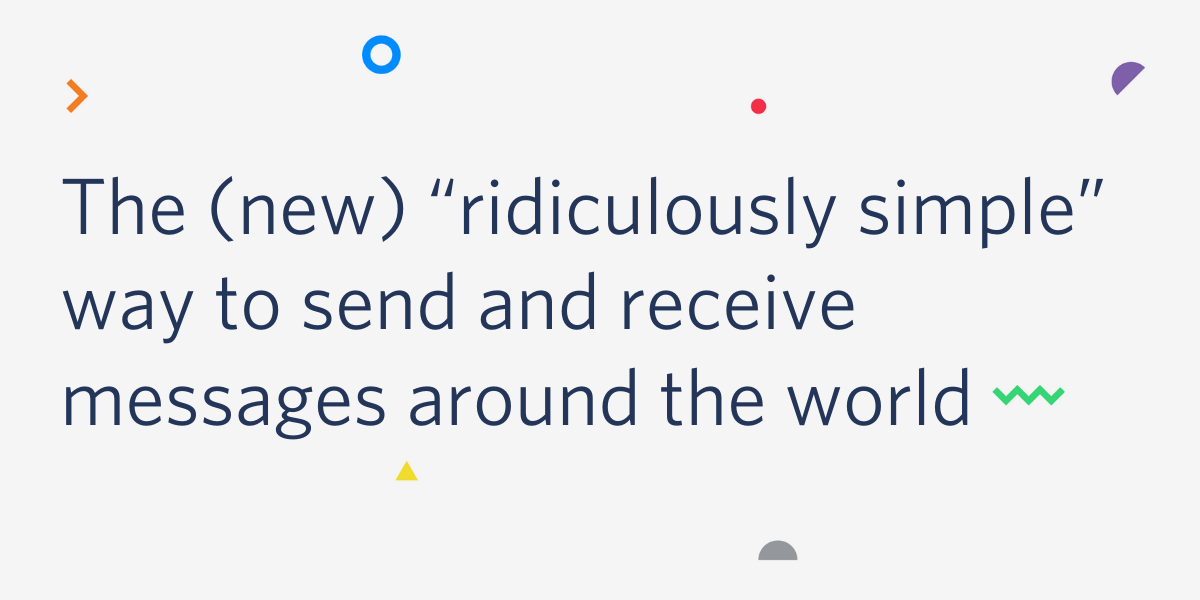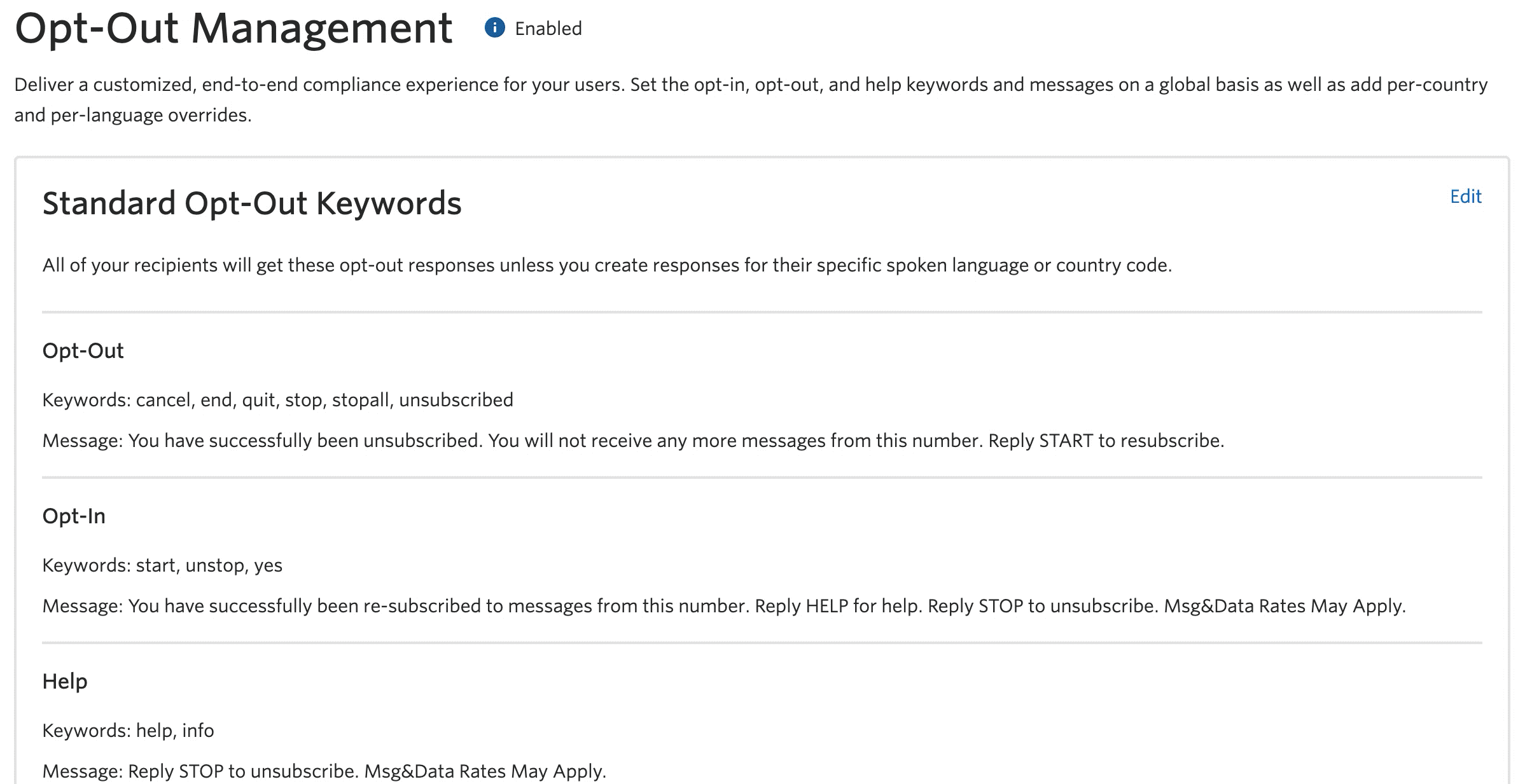The (new) “ridiculously simple” way to send and receive messages around the world
Time to read: 3 minutes

When we first launched the Twilio SMS API in 2010, we called it a “ridiculously simple” way to send messages around the world. Millions of developers have joined Twilio since then, sending and receiving more than 66 billion messages every year.
We’re excited to launch a new Messaging Console experience with enhanced Messaging Service features like Advanced Opt-Out and Sender ID Compliance Alerts, and the ability to add WhatsApp senders to a Messaging Service Sender Pool. This is part of Twilio’s commitment to simplify the complexities of global telecommunications for developers. With the Programmable Messaging API, a single API for SMS, MMS, and WhatsApp, you can integrate Twilio with your application and configure software to manage phone numbers, improve message deliverability, handle inbound replies, and maintain privacy, compliance, and opt-out settings.
Simpler sending starts with a Messaging Service
What’s a Messaging Service? A Messaging Service is a container for grouping global senders (like long codes, short codes, toll-free, alpha senders, and WhatsApp-enabled senders) and enabling intelligent sending with software. With a Messaging Service, you can:
- Automate sender selection - Use sticky sender, geomatch, and fallbacks to automatically select the best sender type based on use case, carrier networks, consumer interaction, and location.
- Integrate with your application - Define how your application handles inbound messages, delivery status, and message queuing.
- Handle message content and conversion - Configure logic to prevent encoding failures and handle conversion fallbacks.
- Maintain compliance - Control the opt-out experience and set alerts for countries requiring pre-registered Sender IDs.
An improved Console experience makes it easier to configure (and find) the Messaging Service features that are most relevant to your use case.
We’ve also released improvements to Advanced Opt-Out and added Sender ID Compliance Alerts to reduce your development time and improve deliverability.
New Advanced Opt-Out functionality

Whether you’re sending one message or a million messages, there are important regulatory standards to consider. The specific laws and regulations that apply will depend on the particulars of your text messaging campaign. This includes where the texts originate, where recipients of your texts are located, where your company is located, the industry you are in, and the content of your text messages. We always recommend consulting with a lawyer to ensure that you’re in compliance with all regulations – and delivering the best possible experience for your users.
To help simplify this experience and make the compliance process more efficient, we offer basic opt-out functionality and Advanced Opt-Out for use cases that require modifications and overrides for a custom experience.
Along with a streamlined interface, we’ve implemented an Advanced Opt-out Draft feature to make it a seamless transition when you’re ready to to migrate opt-out handling to Advanced Opt-Out. You can now set up and review your keywords and responses before going live with the changes.
Global sending with Sender ID Compliance Alerts
In addition to localizing opt-in and opt-out experiences for global sending, you must also follow country-specific requirements for sender types. In certain countries, it’s either recommended or required to send messages over a pre-registered Alphanumeric Sender ID (we’ve provided this resource to help you navigate regulations country-by-country).
Using Alphanumeric Sender IDs is not only a requirement for high-volume traffic in certain countries, but can also improve message deliverability. Proactive alerts in Console let you know when messages are sent over the wrong sender type to destinations where registration is required or recommended. These alerts ensure your messages remain compliant and achieve high deliverability, even as rules and regulations change around the world.
WhatsApp Senders in Messaging Services
As more and more developers discover the benefits of using a combination of SMS and WhatsApp in their customer communications, they’re also discovering the benefits of using a Messaging Service to support use cases at scale. Messaging Service Features distribute WhatsApp messages across multiple WhatsApp-enabled senders for higher throughput use cases, like notifications. With this new update, you’re now able to add WhatsApp senders to existing Messaging Services, and send messages over WhatsApp without changing application code.
Getting started
We’ve included some resources to help you take advantage of these new features, but it’s nothing like seeing it for yourself. Head over to your newly designed Programmable Messaging Console to get started.
We can’t wait to see what you build!
Related Posts
Related Resources
Twilio Docs
From APIs to SDKs to sample apps
API reference documentation, SDKs, helper libraries, quickstarts, and tutorials for your language and platform.
Resource Center
The latest ebooks, industry reports, and webinars
Learn from customer engagement experts to improve your own communication.
Ahoy
Twilio's developer community hub
Best practices, code samples, and inspiration to build communications and digital engagement experiences.


